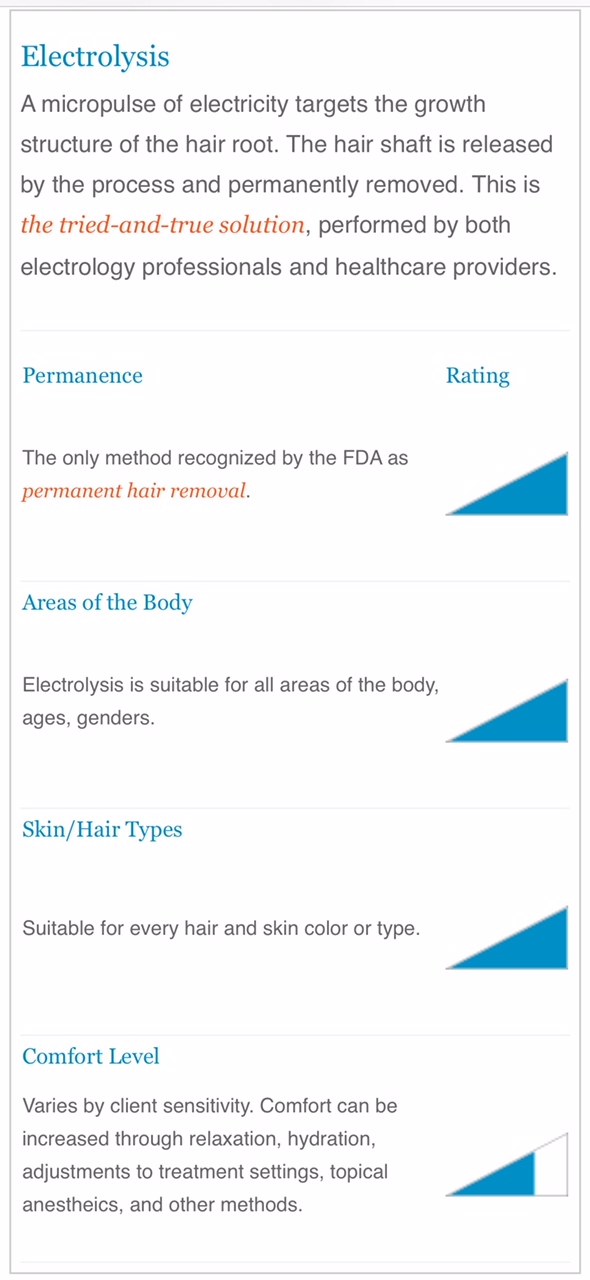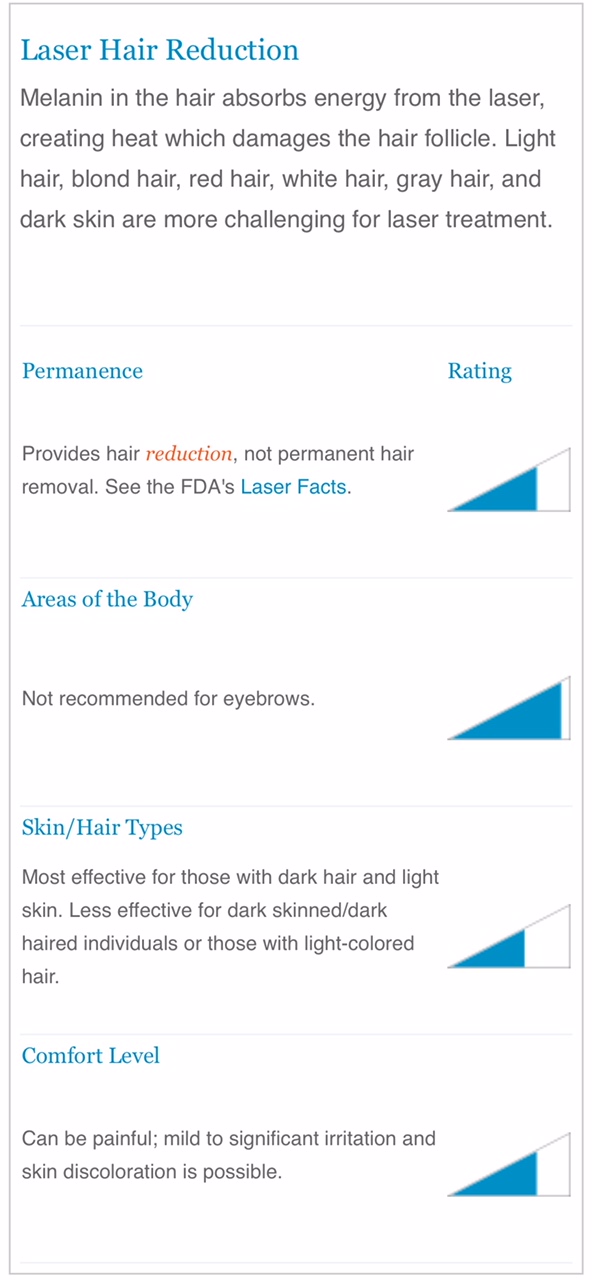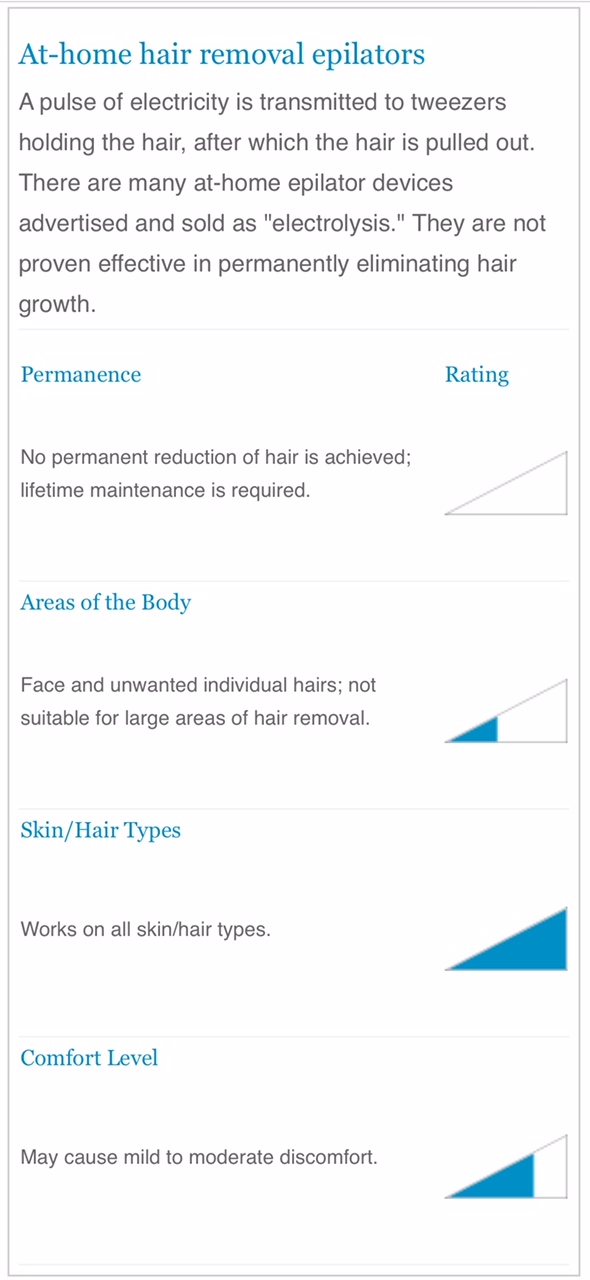Why Choose Electrolysis Over Temporary Methods Like Waxing?
Electrolysis offers a permanent solution for unwanted hair, unlike temporary methods such as waxing, threading, or tweezing, which only provide short-term results. Electrolysis is effective on the widest variety of skin and hair types, making it the go-to option for lasting hair removal.
Temporary methods often come with drawbacks. Waxing, threading, and tweezing can lead to ingrown hairs, discoloration, and even increased hair growth over time. Shaving and depilatories can irritate the skin and require frequent maintenance, with hair regrowing quickly. While these methods may seem more affordable at first, the costs add up over time, not to mention the inconvenience of repeated treatments.
Electrolysis, on the other hand, removes hair permanently, saving you time, money, and the hassle of regular touch-ups. It works effectively on most areas of the body, leaving you with smooth, healthy-looking skin for the long term. No other hair removal method can match electrolysis for its universal success and lasting results.



